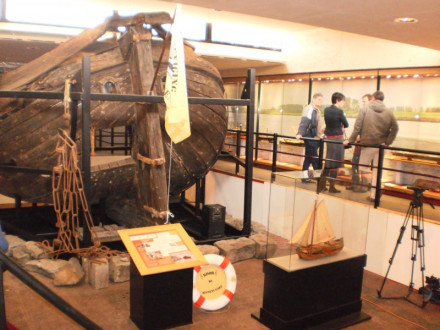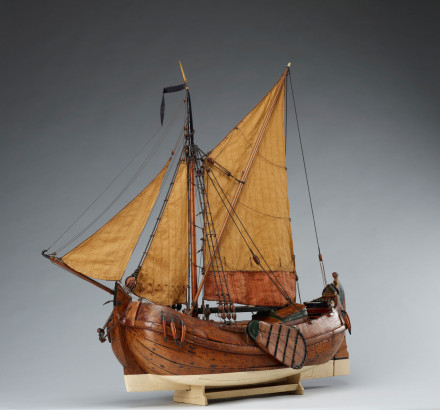History
Discovery during dredging
In 2006 a wreck was found in the Dortsche Kil river in the Netherlands during dredging works. It soon became clear that this could be the remains of a valuable shipwreck and the stern of the wreck was salvaged under the guidance of the Dutch Cultural Heritage Agency (RCE). Archaeological and archival research led to the conclusion that the wreck was De Jonge Jacob.
An unlucky captain
De Jonge Jacob was a Dutch flat-bottomed vessel of the tjalk type. This type of cargo vessel was very common in the Netherlands in the past centuries and was suited to its shallow waters. The construction date of De Jonge Jacob is unknown; in fact, not much is known about this typical Dutch cargo ship until her final voyage in 1858. She was traveling from the Belgian city Tournai (Doornik in Dutch) to the Netherlands with a cargo of basalt stones that were intended as building materials. She sank in a heavy squall on July 23, 1858, in the Dordtsche Kil, a short river in the province of South Holland which forms the connection between the Oude Maas river and the tidal river the Hollands Diep.
De Jonge Jacob was captained on this voyage by Hendrik Ritmeester (1809-1902), who survived the loss of the ship, although his eighty-year-old father drowned. It seems that Ritmeester was a very unsuccessful or unlucky captain, as he lost three ships during his career, which led not only to the loss of his father but also the deaths of some of his children. It was common on this type of ship for the skipper to live on board with his family.

Description
De Jonge Jacob is a 19th century hektjalk, which is a variation of the Dutch ship type tjalk. The tjalk (pronounced 'chalk') ship type is first mentioned in a Frisian document in 1673, and was a small ship used for cargo transportation in inland and tidal waters. The traditional tjalk is rounded with a full bow, a flat bottom, and a shallow draft. Because of this, they were fitted with leeboards. It is constructed with a strong sloping inward bulwark, and a single mast with a fore and aft rig. On a hektjalk, the bulwark slopes up on either side of the stern, to meet and form a triangle above the tiller.
The wreck of De Jonge Jacob has a unique feature: a large square hatch was found during excavation in the stern just above the waterline. It is presently unknown what the hatch was used for, although there is a theory that it was perhaps used to enable the transport of long logs.

| Master | Ritmeester, Hendrik |
|---|---|
| People on board | 2 |
Status
The wreckage has been excavated and raised, and is now on display at the Binnenvaartmuseum in Dordrecht. A range of different items were excavated along with the vessel, including domestic items such as a milk jug, a cooking pan, shards of dishes, and a tobacco box, as well as parts of the rigging like blocks. The excavation raised some questions regarding the identity of the vessel, and there are questions concerning the correctness of the identification as De Jonge Jacob . The stern name plate was found, but not the name plate for the bow. There were also at least five other vessels in the area named De Jonge Jacob at this time, but at present none of them can be connected to the 1858 Dordtsche Kil wreck.
References
- Binnenvaartcentrum.
De Jonge Jacob. - Canon van Nederland.
De Jonge Jacob.